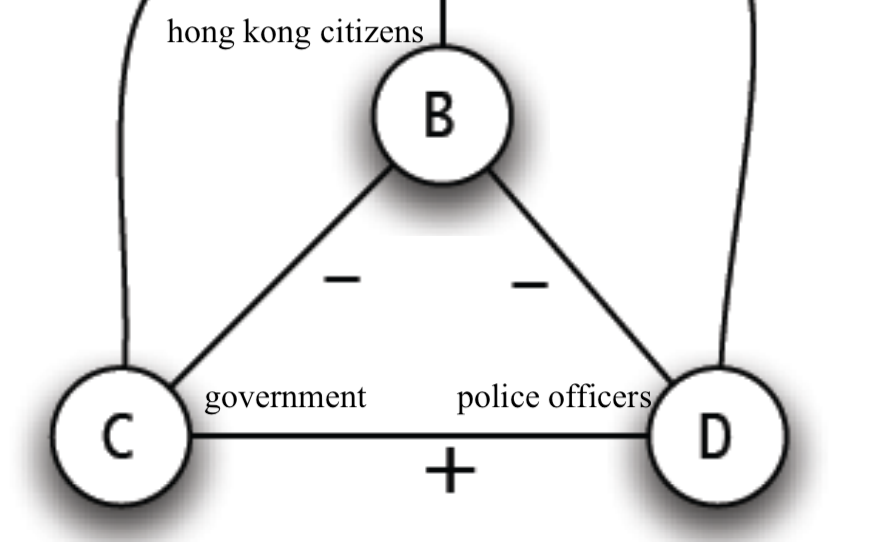Hong Kong has been on global headlines since June, with 2 million (that’s a quarter of the population) marching on the streets demanding the withdrawal of the extradition bill, which has since evolved into anti-government protests . With just over 7 million people in the semi-autonomous city, some people wonder – why hasn’t the entire population turned against the government yet? Everybody has seen the police brutality and the ignorance of the government – yet, everyday on social media, there are people who choose to ignore the police-state like and authoritarian actions by the government and instead focus their attention on protesters fighting for Hong Kong’s freedoms?

It can simply be explained with the Theory of Structural Balance. It became clear through the intuition [Heider ‘46] that the “enemy of my friend, is my enemy”. Consider the following scenarios:
Protesters are blocking my way to work. I dislike them. The protesters dislike the government. Thus I support the government’s actions. (Example of exactly one edge labeled +)

The police force has stepped on my freedom (negative edge). The government controls the police force. (positive edge), thus I dislike the government.
These two intuitive examples show exactly that the Balance Theorem [Cartwright-Harary] can be applied to the situation in Hong Kong. Take note of the underlined sections of the scenarios – we can use local view to fill in this edge (without previously knowing) to achieve balance. Overall, the network is clearly separated into two notable factions – people who are in support of democracy, and people who are supporters of the Beijing controlled government.
Sources:
